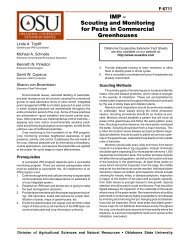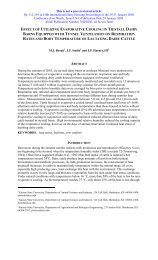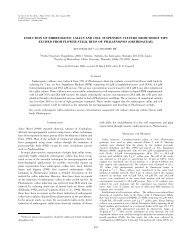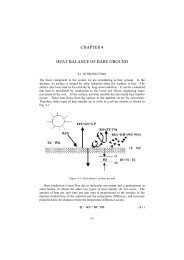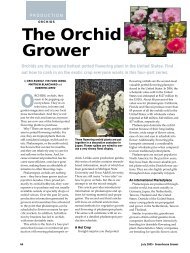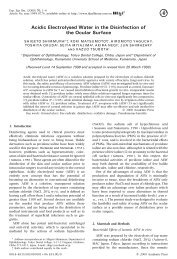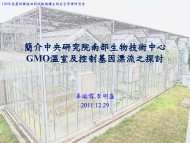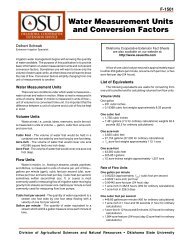Moisture Content Measurement of Bark and Sphagnum Moss Using ...
Moisture Content Measurement of Bark and Sphagnum Moss Using ...
Moisture Content Measurement of Bark and Sphagnum Moss Using ...
You also want an ePaper? Increase the reach of your titles
YUMPU automatically turns print PDFs into web optimized ePapers that Google loves.
gravimetric moisture ratio (in g/g). However, most frequent unit used for moisture ratio is involumetric basis, that in m 3 /m 3 . The converting equation between two ratios is as follows:MRv = MRg * BKWhere, MRv: Dry basis volumetric moisture ratio (m 3 /m 3 )MRg: Dry basis gravimetric moisture ratio (g/g)BK: Bulk density (g/cm 3 )Bulk densities <strong>of</strong> the growth media <strong>of</strong> interests were listed in Table 3. As shown in the lastcolumn, how the sphagnum moss was filled can make a great difference thus leading one to realize thatcertain st<strong>and</strong>ard operating procedures (SOPs) need to be setup for workers to guide the filling/pottingoperation. Table 3 shows that the amount <strong>of</strong> sphagnum moss used can be double when compactly filledcompare with loosely filled.Table 3 Bulk density <strong>of</strong> growth media measured (g/cm 3 )OrchiatabarkBulk densitySource <strong>of</strong><strong>Sphagnum</strong> mossFilledBulk densityNo. 5 0.2656 New Zeal<strong>and</strong>No. 8 0.28499 ChileNo. 9 0.33752 ChinaLoose 0.1434Compact 0.2879Loose 0.1362Compact 0.3024Loose 0.1368Compact 0.24814. ConclusionEquations to convert sensor outputs to gravimetric moisture ratio <strong>and</strong> volumetric moisture ratiowere derived for 3 sources <strong>of</strong> sphagnum moss <strong>and</strong> 3 particle sizes <strong>of</strong> Orchiata bark. All equationsderived were integrated into a s<strong>of</strong>tware program written in VB.Net. Users can select proper equationfor different analog input port based on the type <strong>of</strong> the sensor <strong>and</strong> the growth media under use. Asshown in Fig.8, all raw data <strong>and</strong> converted data can be stored in Access (Micros<strong>of</strong>t) database allow forlater process or display trends in real time.



